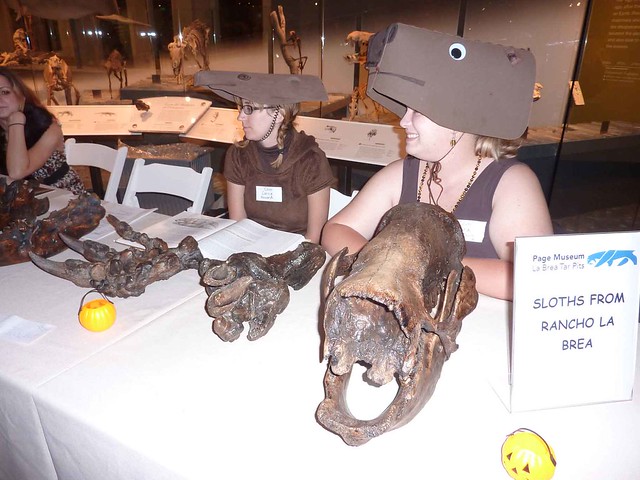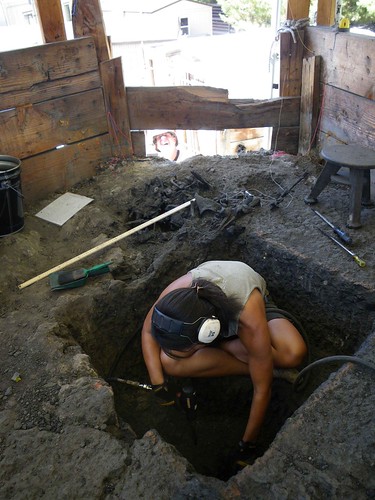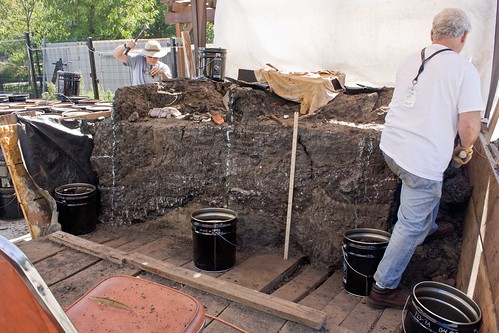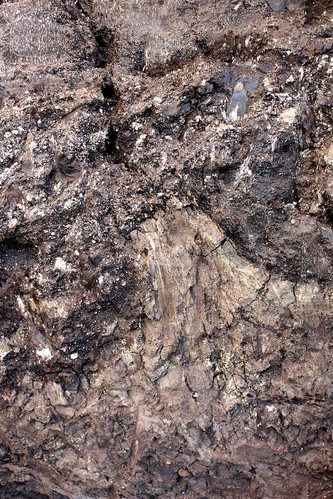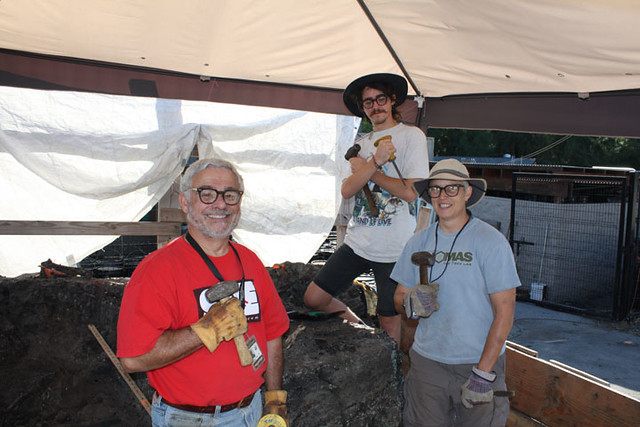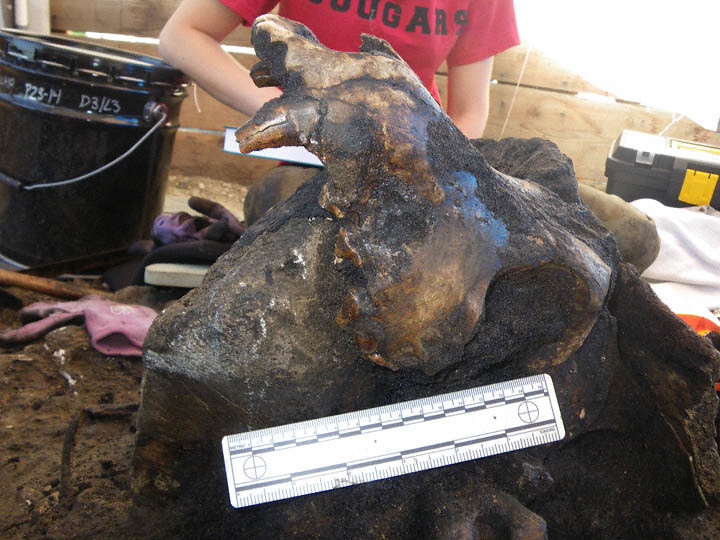1. Box 7A is almost done!

and volunteer Katlynn Thompson makes excavating the rest of it look easy
2. Box 14 has been exposed down to more levels.
After removing more fill and plastic we have exposed more of the deposit edges and found more boards, metal bands, crumbling sides, buried artifacts from initial excavation (electrical wiring and a tupper-ware lid) and discovered this:

??? A hole in the west side edge of the deposit.
Recent finds of the ancient kind in 14 include:

Dire wolf sacrum found at bottom of level 3

Little Timmy's humeri. Here is the proximal end of one standing exposed. It has an old break that caliche filled. This end was removed at that break and the rest of the bone lies in level 4. We also have its other humerus lying to the west in L4.

A coyote skull, seen under the dark hard asphalt in this picture.

We continue to be captivated in curiosity by box 14 caliche. This is the top of a layer of it that we exposed in grid D-3 L4.

Here is a cross-section of caliche in the D-3 L4 south wall.

And a closer look because we love it so much.
Recent excavator activities of the non-digging kind
Also, we have been starting to screen-wash non-asphaltic matrix buckets from box 5B to see if they are sterile. Here Michelle and Karin break apart matrix of different soil types within a grid that have been soaking in water.


